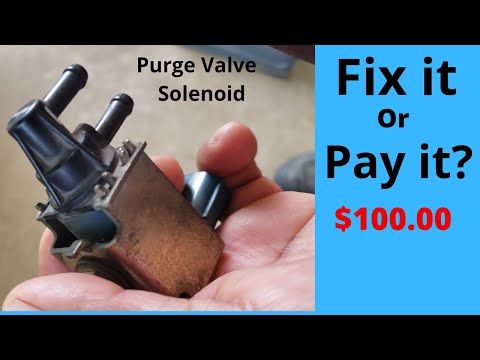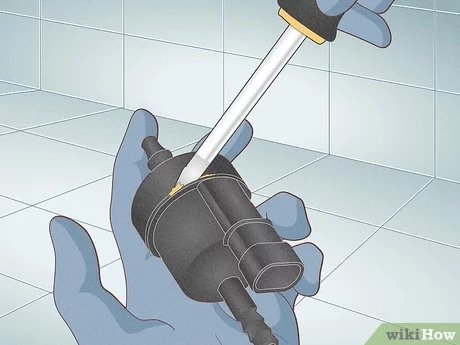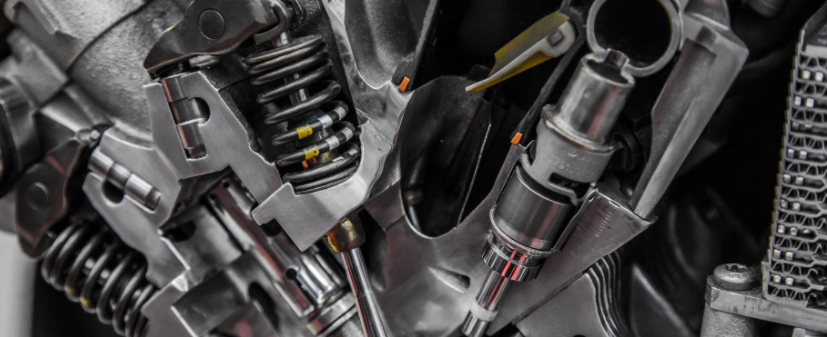


A purge solenoid valve is a critical component of a vehicle's Evaporative Emission Control (EVAP) system. Its primary function is to control the flow of fuel vapors from the charcoal canister to the engine's intake manifold.
In this article, I'll share my expertise and walk you through the process of cleaning a purge solenoid valve, including the common causes of contamination, inspection and diagnosis techniques, repair procedures, and preventive measures to ensure your vehicle's EVAP system remains in top condition.

Before we dive into the cleaning process, it's essential to understand the primary reasons why a purge solenoid valve can become dirty or clogged. Here are some of the most common culprits:
| Cause | Description |
|---|---|
| Buildup of Debris and Carbon Deposits | Over time, fuel vapors can leave behind a sticky residue, which attracts dirt, debris, and carbon deposits. This buildup can accumulate inside the valve, hindering its proper operation. |
| Lack of Maintenance and Cleaning | Like any other component, the purge solenoid valve requires regular maintenance and cleaning. Neglecting this crucial step can lead to a buildup of contaminants, causing the valve to stick or become clogged. |
| Wear and Tear | The purge solenoid valve is a hardworking component that constantly opens and closes to regulate the flow of fuel vapors. This constant operation can lead to wear and tear, making the valve more susceptible to contamination and potential failure. |
Before attempting to clean the purge solenoid valve, it's crucial to properly inspect and diagnose the issue. Here's how I approach this step:
Locate the Purge Solenoid Valve: The first step is to locate the purge solenoid valve, which is typically situated near the engine's intake manifold. Consult your vehicle's repair manual or online resources for the exact location specific to your make and model.
Visual Inspection: Carefully inspect the valve for any visible signs of damage, leaks, or contamination. Look for cracks, discoloration, or any debris buildup around the valve or its connections.
OBD-II Scanner Diagnosis: Connect an OBD-II (On-Board Diagnostics) scanner to your vehicle's diagnostic port. This tool can help identify any trouble codes related to the EVAP system, such as:
| Trouble Code | Description |
|---|---|
| P0443 | Evaporative Emission Control System Purge Control Valve Circuit |
| P0444 | Evaporative Emission Control System Purge Control Valve Circuit Open |
Vacuum Test: Perform a vacuum test by applying vacuum to the valve and checking for any leaks. A leaking valve may indicate a problem with the valve itself or its associated components, such as hoses or connections.
Once you've identified that the purge solenoid valve is indeed dirty or clogged, it's time to proceed with the cleaning process. Here are the steps I typically follow:

Disconnect the Battery: For safety reasons, always disconnect the negative battery cable before working on any electrical components.
Remove the Valve: Follow the manufacturer's instructions to properly remove the purge solenoid valve from the vehicle. This may involve disconnecting hoses, electrical connectors, and mounting hardware.
Clean the Valve Openings: Use a throttle body cleaner or MAF (Mass Air Flow) sensor cleaner to spray inside the valve openings. These cleaners are designed to dissolve and remove stubborn deposits and buildup.
Brush Away Debris: Use a small, soft-bristle brush to gently scrub away any remaining debris or buildup inside the valve openings. Be careful not to damage any internal components.
Allow to Dry: Once you've thoroughly cleaned the valve, allow it to dry completely before reinstallation. Any residual moisture can potentially cause further issues.
In some cases, cleaning the purge solenoid valve may not be enough, or the valve may be damaged beyond repair. In such situations, replacement is necessary. Here's how I approach valve replacement:
Follow Manufacturer's Instructions: Consult your vehicle's repair manual or online resources for the specific instructions on removing and installing the purge solenoid valve for your make and model.
Secure Connections: After installing the new valve, ensure that all hoses and electrical connections are securely reconnected and properly routed.
Reset Trouble Codes: Once the new valve is installed, use an OBD-II scanner to clear any existing trouble codes related to the EVAP system.
While cleaning or replacing the purge solenoid valve can resolve immediate issues, it's essential to take preventive measures to ensure the longevity of your vehicle's EVAP system. Here are some tips I recommend:
Regular Maintenance and Cleaning: Include the purge solenoid valve in your routine maintenance schedule. Regular cleaning can help prevent buildup and potential failure.
Avoid Overfilling the Gas Tank: Overfilling the gas tank can cause fuel to enter the EVAP system, leading to contamination and potential damage.
Use High-Quality Fuel: Always use high-quality fuel from reputable sources. Inferior fuel can contribute to increased buildup and contamination.
Follow Recommended Service Intervals: Adhere to the manufacturer's recommended service intervals for your vehicle. Regular maintenance can help identify and address potential issues before they become major problems.
When it comes to repairing or replacing the purge solenoid valve, it's important to consider the associated costs. Here's a general breakdown of what you can expect:
| Cost Factor | Estimated Cost Range |
|---|---|
| Replacement Part Cost | $20 - $150 |
| Labor Costs (Professional Mechanic) | $44 - $55 or more |
| DIY Savings | Significant savings on labor costs |
| Total Cost Estimate | $100 - $500 or more |
Replacement Part Cost: The cost of a replacement purge solenoid valve can range from $20 to $150, depending on the vehicle make and model. Purchasing the part from an auto parts store or online retailer can be more cost-effective than going through a dealership.
Labor Costs: If you choose to have the repair or replacement performed by a professional mechanic, labor costs can range from $44 to $55 or more, depending on the complexity of the job and the hourly rate of the repair shop.
DIY Savings: For those with mechanical skills and the necessary tools, performing the repair or replacement yourself can save significantly on labor costs. However, it's crucial to follow the proper procedures and safety precautions to avoid potential damage or injury.
Total Cost Estimate: On average, the total cost of a purge solenoid valve replacement, including parts and labor, can range from $100 to $500 or more, depending on the vehicle and the specific repair shop or dealership.
Maintaining a clean and properly functioning purge solenoid valve is essential for the overall health and efficiency of your vehicle's EVAP system. By following the steps outlined in this article, you can effectively clean or replace the valve, ensuring optimal performance and minimizing the risk of costly repairs down the line.
Remember, prevention is key. Regular maintenance, using high-quality fuel, and adhering to recommended service intervals can go a long way in preventing issues with the purge solenoid valve and other components of your vehicle's emission control system.
Whether you choose to tackle the repair yourself or seek professional assistance, understanding the importance of this often-overlooked component and taking proactive measures can save you time, money, and frustration in the long run.
The purge solenoid valve controls the flow of fuel vapors from the charcoal canister to the engine's intake manifold, where they are burned during combustion. This helps reduce harmful emissions and improve fuel efficiency.
The engine control unit (ECU) signals the purge solenoid valve to open when the engine is running and at specific operating conditions. This allows the fuel vapors stored in the charcoal canister to be drawn into the engine for combustion.
Common causes include buildup of debris and carbon deposits, lack of maintenance and cleaning, and wear and tear over time.
Symptoms may include the check engine light illuminating, poor engine performance, rough idling, decreased fuel efficiency, and increased emissions.
Visually inspect the valve for damage or leaks, perform a vacuum test, check for trouble codes using an OBD-II scanner, and test the valve's operation using a scan tool.
Disconnect the valve, spray a throttle body cleaner or MAF sensor cleaner into the valve openings, use a soft brush to remove debris, and allow it to dry completely before reinstallation.
If cleaning the valve does not resolve the issues or if the valve is damaged beyond repair, it should be replaced.
Include the valve in routine maintenance schedules, avoid overfilling the gas tank, use high-quality fuel, and follow recommended service intervals.
The replacement part typically costs between $20 and $150, with labor costs ranging from $44 to $55 or more, depending on the vehicle and repair shop.
The EVAP system and purge solenoid valve play a crucial role in reducing harmful emissions and improving fuel efficiency by capturing and burning fuel vapors instead of releasing them into the atmosphere.

Sarah isn't your average gearhead. With a double major in Mechanical Engineering and Automotive Technology, she dived straight into the world of car repair. After 15 years of turning wrenches at dealerships and independent shops, Sarah joined MICDOT to share her expertise and passion for making cars run like new. Her in-depth knowledge and knack for explaining complex issues in simple terms make her a valuable asset to our team.













